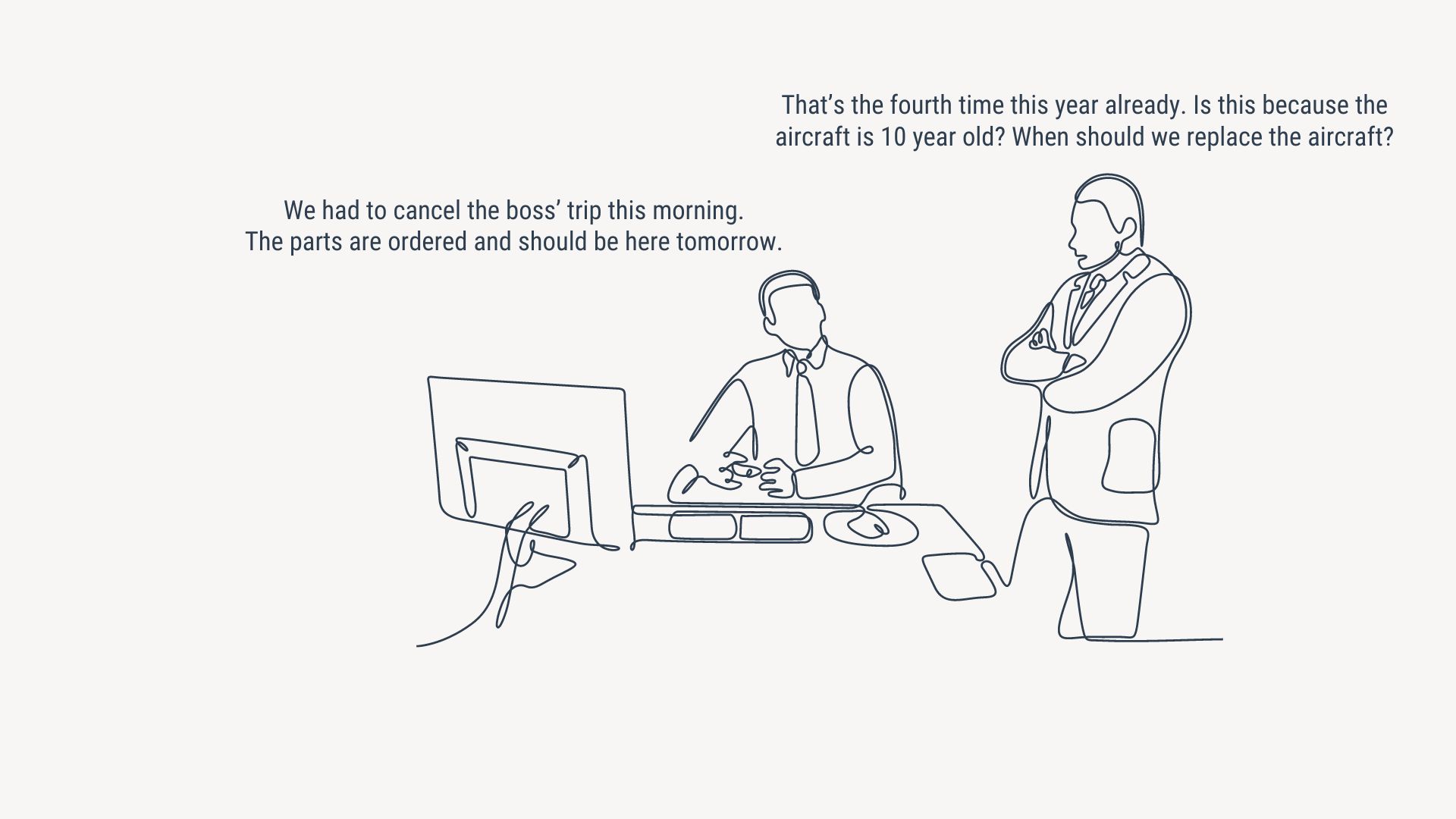
Having a systematic and thoughtful aircraft replacement strategy is important for capital planning as well as operational planning. The common question is “how old is too old?” And “when is the ideal window of time to replace an aging aircraft?”
In a recent LinkedIn poll, we saw a variety of philosophies to aircraft age. The overall average was 8.3 years.

When aircraft age becomes a consideration for you, there are several aircraft-specific factors that influence a sound replacement strategy.
Maintenance Costs
Like a house or a car, the older an aircraft becomes, the more maintenance it requires. A new aircraft has various warranties like interior, paint, part/components, engine, and airframe. The primary driver to maintenance costs is the part/components warranty which typically expires after 5 years. Beyond 5 years, maintenance costs can increase 20-40% depending on the aircraft model.
Reliability and Availability
Also, the older an aircraft becomes, the more likely the aircraft will have unscheduled maintenance. As your aircraft ages, your maintenance strategies should also evolve to mitigate some of the reliability risks. But even so, data shows that an aircraft greater than 15 years has 2.5 times the maintenance days per year than an aircraft less than 5 years old.
Large Maintenance Event
Another key factor in aircraft replacement strategy is identifying and mitigating the cost and downtime of large maintenance events. Depending on your aircraft model, these large inspections may occur every 6, 8 or 12 years. The cost and downtime can range from $100,000/10 days to $500,000+/30+ days.
Technology Advancements
Technology within the cockpit and cabin continue to evolve and improve at a rapid pace. Key technologies like enhanced vision, heads up display, and synthetic vision have become common in new aircraft. These avionics improvements are key to risk mitigation. This includes reducing pilot workload and improved situational awareness. Staying aligned with these advancements either require significant modification of aging aircraft ($500k to $1,000k+) or developing a replacement cycle accordingly.
Choosing a Renewal Cycle
Selecting a renewal cycle should align with your organization’s philosophy and financial risk appetite:
- Conservative: replace the aircraft every 5 years to maintain in-warranty benefits.
- Moderate: replace every 7 years to mitigate large inspection costs and downtime
- Aggressive: replace every 10 years and risk technology advancement and maintenance cost
Want to learn more about your aircraft replacement options? Contact VanAllen to learn more about our Fleet Planning services
